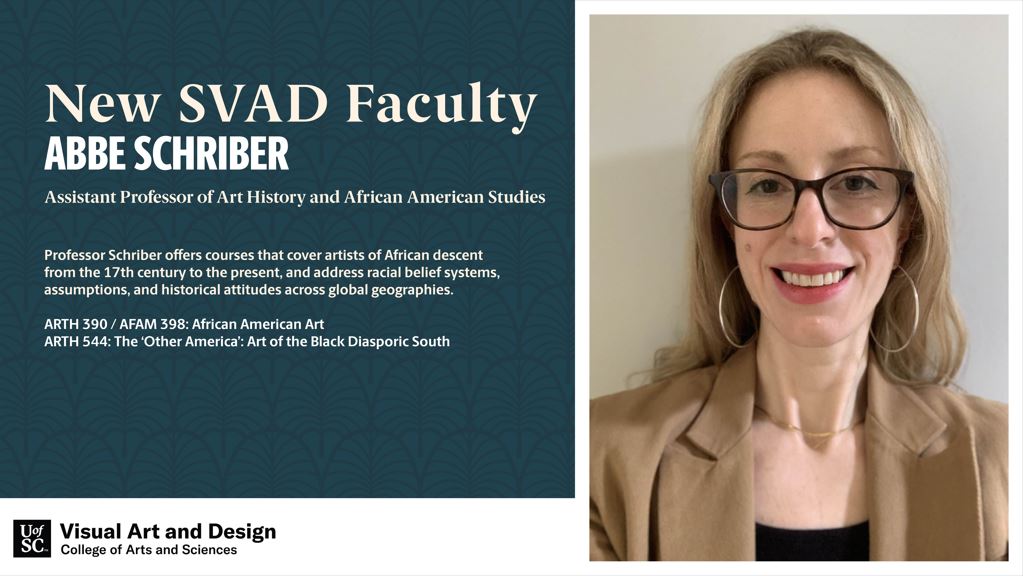Abbe Schriber is an assistant professor of Art History and African American Studies who joined the university this fall. Professor Schriber focuses on 20th and 21st century art, performance, and material culture of the African Diaspora. Her research analyzes the unconventional, genre-blurring practices of artists of African descent in the United States to ask how diaspora—along with its dynamics of cultural survival and loss—is integral to visual innovation.
Why did you choose to come to the School of Visual Art and Design at the University of South Carolina?
I am incredibly excited about SVAD’s commitment to African American Studies and the work ahead to support, emphasize, and center people of African descent from the standpoint of visual art. Across departments my colleagues are doing wonderful work and I was really impressed by the intellectual community in SVAD and beyond! Finally, being at South Carolina gives me access to local archives, collections, and physical landscapes that I plan to incorporate into my classrooms (and research) to position a US Southern history, as really a Black diasporic history; and to expand American art vis-à-vis histories of diaspora.
How do you approach teaching?
Overall my teaching develops critical thinking, close looking, and strong writing skills with regard to constructions of race across the African diaspora. My classes bridge connections between African, European, and American art contexts, especially laying the groundwork for links to traditional arts of Africa, which artists in later generations claimed as their inheritance and visual form of connection.
What can students expect to learn from your classes this fall?
I am a huge fan of working directly with local archives and primary sources, so students can expect to get up close and personal with the Columbia Museum of Art, the McKissick, and the South Caroliniana Library. These are amazing resources that can really make art history come alive. I am also transparent about my role in the classroom, and passionate about instilling tools of critical self-analysis. I encourage students to record their reactions to whiteness, and its realities of power, economic access, and social positioning.
The most rewarding part of your job is….
Empowering students to make new connections, acquire new skillsets, and envision more just and ethical futures of art history!
What is an interesting or surprising fact about you?
This is probably neither interesting nor surprising, but I love animals! I have a cat named Tahini, and I follow many iguana accounts on Instagram.
